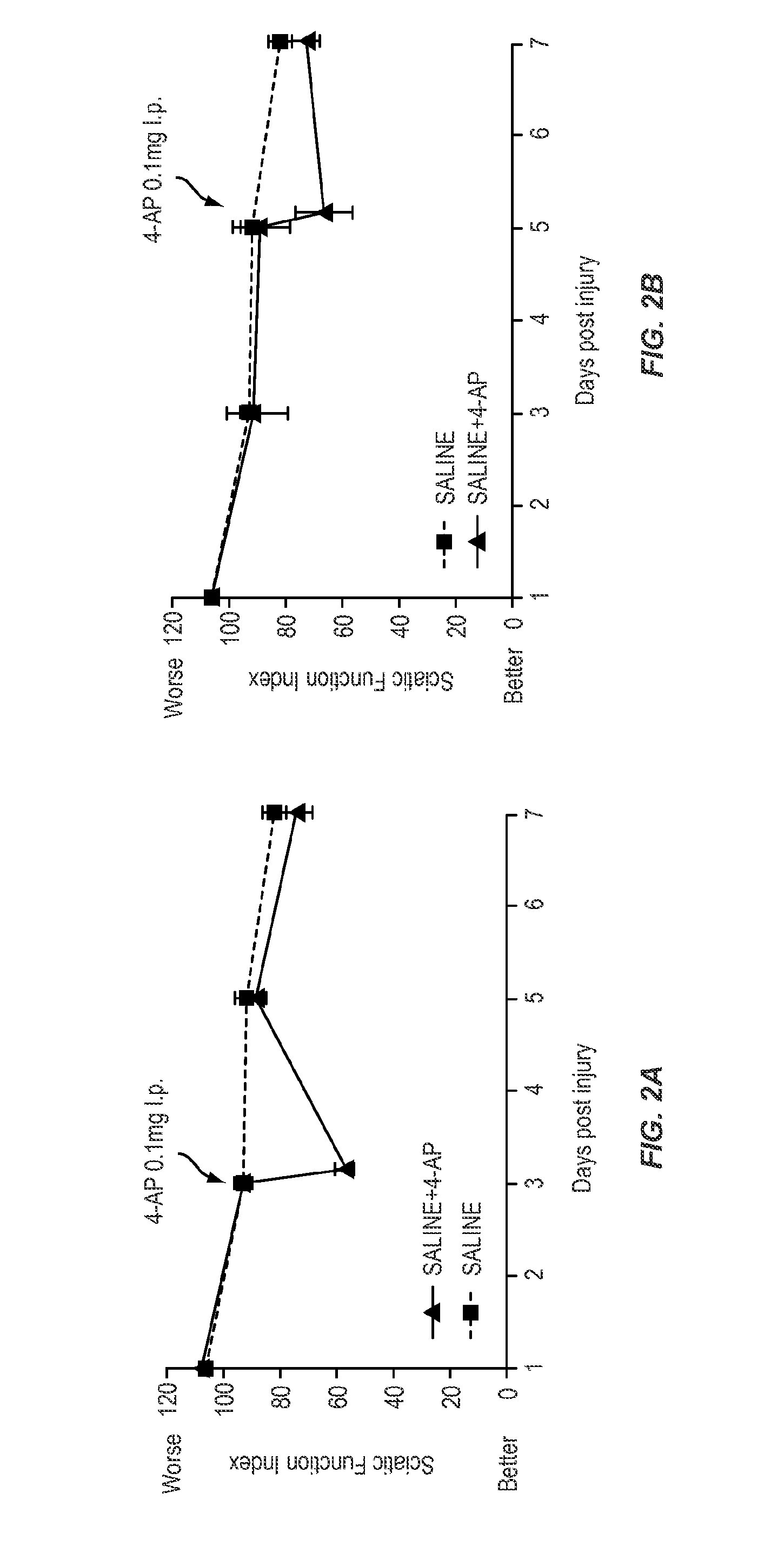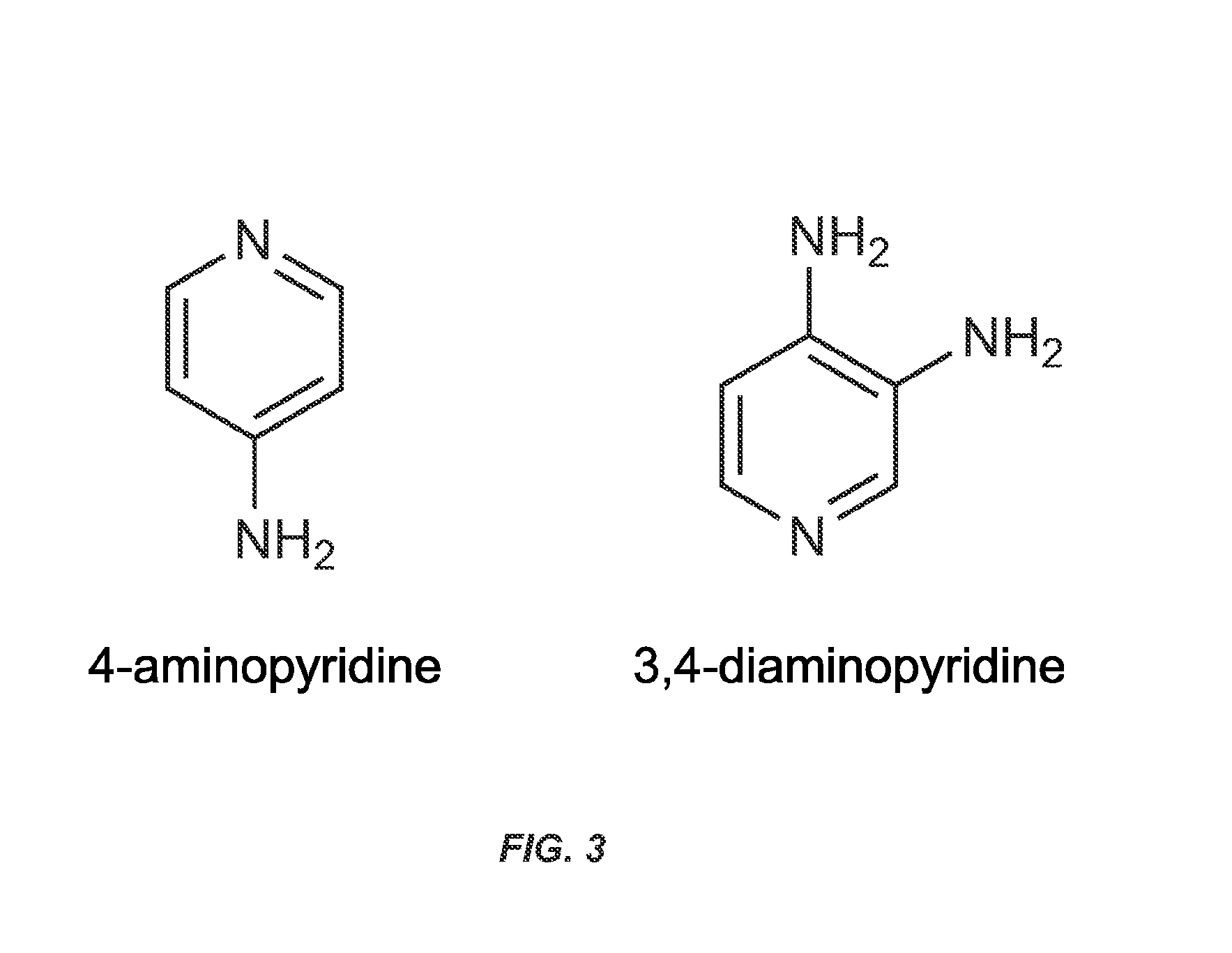Composition and methods for the treatment of peripheral nerve injury
a technology for peripheral nerves and compositions, applied in the field of composition and methods for the treatment of peripheral nerve injuries, can solve the problems of little improvement in the repair of crushed or compressed peripheral nerves, unpredictable response to surgical treatment, etc., and achieve the effect of promoting remyelination and peripheral nerve remyelination
- Summary
- Abstract
- Description
- Claims
- Application Information
AI Technical Summary
Benefits of technology
Problems solved by technology
Method used
Image
Examples
example 1
4-Aminopyridine for the Treatment of Peripheral Nerve Injury
[0069]The concept that 4-AP may have a role in the treatment of compressed nerves emanates from data showing that the conduction velocity of compressed nerves can respond strongly to pharmacologic treatment with this agent. In FIG. 1, three small pilot experiments demonstrate that at various time points, 4-AP treatment can render the function of nerves as measured by their improved conduction velocity. In all three experiments, performed on mice with compression mediated by a sleeve around the nerve for different numbers of weeks, strong effects of 4-AP administration was seen. The ratio of the conduction velocity of the compressed nerve divided by the corresponding contralateral uninjured nerve in these animals shows that recovery is possible, albeit transient (bottom right panel) in these animals. Therefore, 4-AP may be used locally or systemically for the treatment of chronic compression injury.
[0070]There are also possi...
example 2
Erythropoietin (EPO) for the Treatment of Peripheral Nerve Injury
[0076]Improving the course of recovery from peripheral nerve injuries is of critical importance. As described herein, it was found that systemic EPO administration maintained a higher extent of myelinated axons at the site of injury in vivo following sciatic nerve crush. In vitro, EPO treatment promotes myelin formation and protects myelination from oxidative stress in co-cultures of Schwann cells and dorsal root ganglion (DRG) neurons. For translational application to ameliorate the current limitations of using EPO in the clinic, local EPO treatment for peripheral nerve injury delivered by fibrin glue matrix was evaluated. The results described herein demonstrate the effects of EPO on myelin preservation and reformation and further provide EPO as a treatment for peripheral nerve injury. As EPO has been shown to have adverse side effects when administered systemically, the local delivery of EPO reduces the chance of su...
PUM
| Property | Measurement | Unit |
|---|---|---|
| Time | aaaaa | aaaaa |
| Frequency | aaaaa | aaaaa |
| Composition | aaaaa | aaaaa |
Abstract
Description
Claims
Application Information
 Login to View More
Login to View More - R&D
- Intellectual Property
- Life Sciences
- Materials
- Tech Scout
- Unparalleled Data Quality
- Higher Quality Content
- 60% Fewer Hallucinations
Browse by: Latest US Patents, China's latest patents, Technical Efficacy Thesaurus, Application Domain, Technology Topic, Popular Technical Reports.
© 2025 PatSnap. All rights reserved.Legal|Privacy policy|Modern Slavery Act Transparency Statement|Sitemap|About US| Contact US: help@patsnap.com



